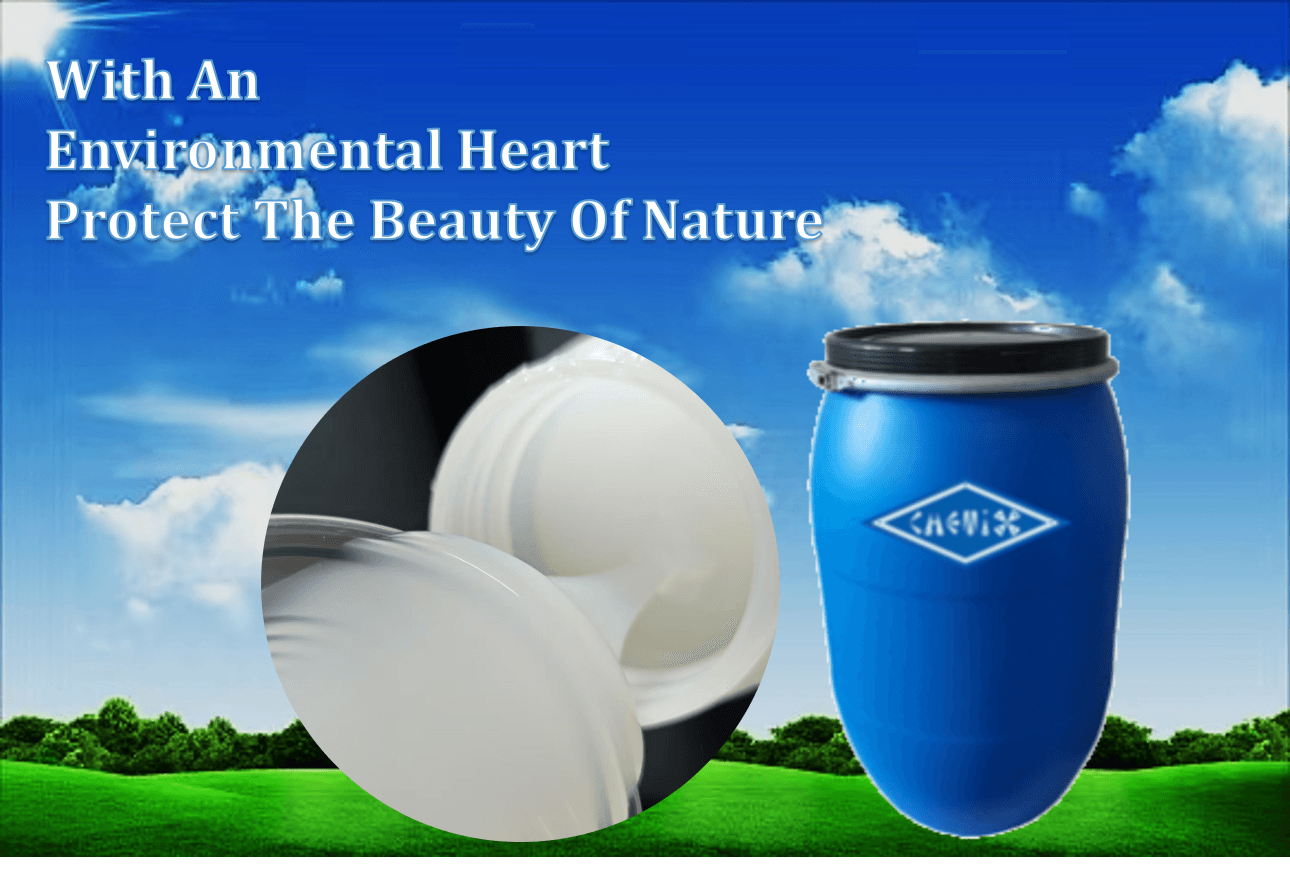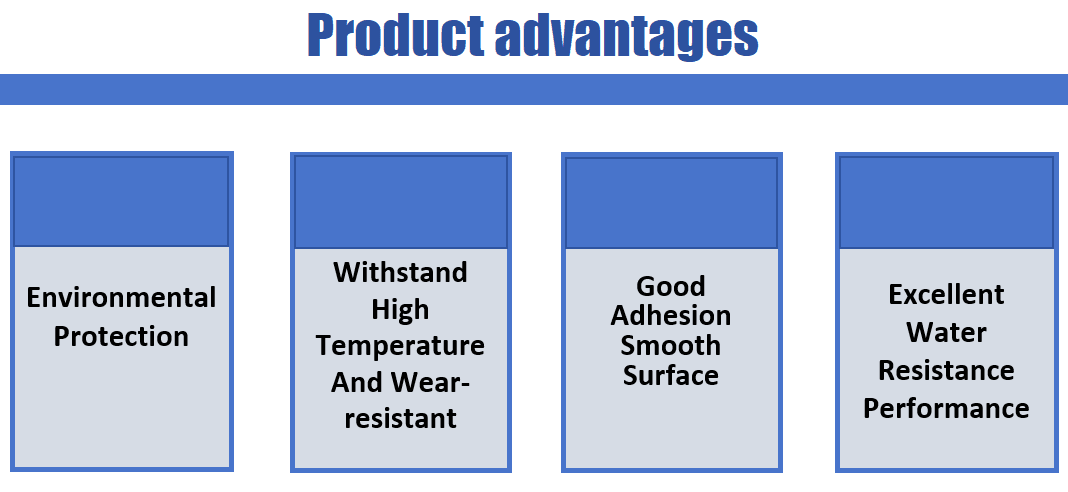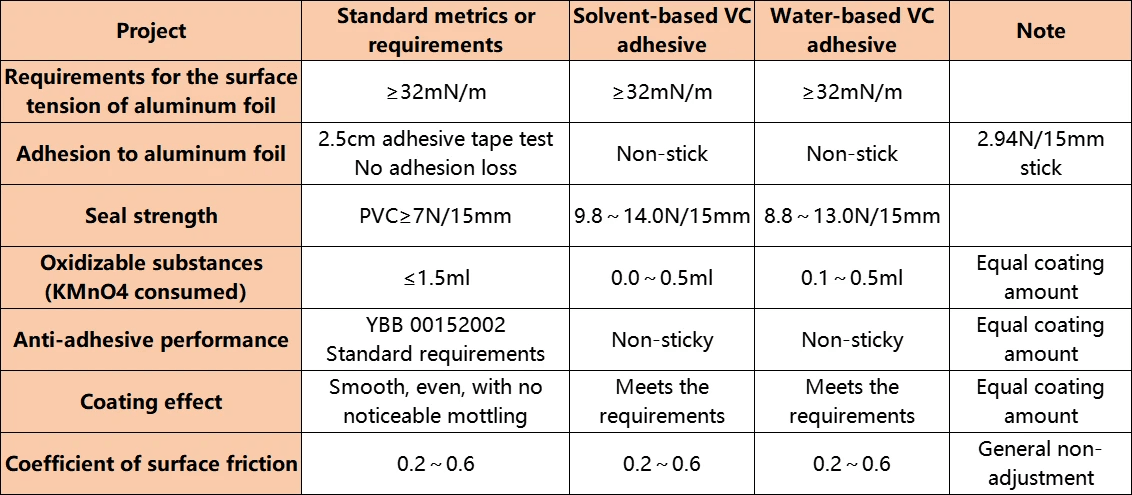Introduction

In the world of packaging, the choice of adhesive can make or break your product's success. Water based lamination adhesives are gaining traction for their eco-friendly nature and impressive performance. Not only do they cater to a variety of applications, but they also align with modern sustainability goals, making them a top choice in flexible packaging solutions.
Benefits of Water Based Laminating Adhesives
Water based laminating adhesives offer numerous benefits that appeal to manufacturers and consumers alike. For starters, they are significantly less harmful to the environment compared to traditional solvent-based options, reducing volatile organic compounds (VOCs) in the production process. Additionally, these adhesives provide excellent bond strength and clarity while being easy to clean up, which enhances operational efficiency.
Applications in Flexible Packaging
The versatility of water-based adhesive examples is evident across various sectors, particularly in flexible packaging. From food wrappers to medical supplies, these adhesives ensure durability while maintaining product integrity and safety. Their ability to adhere to different substrates makes them ideal for use in films, foils, and paper products that require a reliable seal.
Why Choose Water Based Solutions
Choosing water based solutions comes with a plethora of advantages that cater to both environmental consciousness and performance needs. With increasing consumer demand for sustainable practices, opting for a water based adhesive for packaging not only meets regulatory standards but also resonates with eco-aware customers. Furthermore, as industries evolve towards greener alternatives, the reliability and effectiveness of water based lamination adhesives become ever more appealing.
Understanding Water Based Lamination

Water based lamination is a process that employs water-based adhesives to bond layers of materials, often enhancing the durability and aesthetics of packaging. It has gained popularity due to its eco-friendly nature and effectiveness in various applications. This section will delve into the intricacies of water-based lamination, exploring what it is, its characteristics, and how it stacks up against solvent-based alternatives.
What is Water-Based Lamination?
So, what is water-based lamination? In simple terms, it’s a method that utilizes a water based lamination adhesive to create a protective layer over printed materials or packaging substrates. This process not only enhances visual appeal but also offers protection from moisture, dirt, and other environmental factors. The beauty of using a water-based adhesive for packaging lies in its ability to bond effectively without the harsh chemicals found in many traditional adhesives.
Characteristics of Water Based Laminating Adhesives
Water based laminating adhesives are known for their unique characteristics that set them apart from their solvent-based counterparts. Firstly, they are typically non-toxic and free from volatile organic compounds (VOCs), making them safer for both users and the environment. Additionally, these adhesives offer excellent adhesion properties while remaining flexible after curing, which can be crucial for packaging that needs to withstand handling and transportation stresses.
Moreover, these adhesives exhibit quick drying times which enhance production efficiency—a boon for manufacturers looking to streamline operations. Their versatility allows them to be used on various substrates including paper, cardboard, and even some plastics—making them an ideal choice for diverse applications. With numerous water-based adhesive examples available on the market today, selecting the right one can significantly impact your final product’s quality.
Comparison with Solvent-Based Adhesives
When comparing water based adhesives with solvent-based options, several key differences emerge that highlight why many industries are shifting towards more sustainable solutions. Solvent-based adhesives often contain harmful chemicals that can pose health risks during application; this is where water based lamination adhesive shines as a safer alternative without sacrificing performance.
In terms of environmental impact, solvent-based adhesives release VOCs into the atmosphere during application and drying processes—contributing to pollution and health issues—whereas water based solutions do not present such concerns due to their low or zero VOC content.
Additionally, while solvent-based formulations may provide strong initial bonding capabilities under certain conditions, they can become brittle over time or when exposed to moisture—leading to potential failures in packaging integrity. In contrast, a well-chosen water based adhesive for packaging offers durability while maintaining flexibility across varying conditions.
Key Advantages of Water Based Adhesives

Water based adhesives have emerged as a game-changer in the packaging industry, primarily due to their numerous advantages over traditional adhesive solutions. With an increasing focus on sustainability and safety, the benefits of using water based lamination adhesive are becoming more evident. This section delves into the environmental impact, health considerations, and versatility of these innovative adhesives.
Environmental Impact and Sustainability
One of the standout features of water based adhesives is their minimal environmental footprint. Unlike solvent-based alternatives, which can release volatile organic compounds (VOCs) harmful to both health and the planet, water based lamination adhesive relies on water as its primary solvent. This shift not only reduces air pollution but also contributes to a more sustainable manufacturing process, making it an ideal choice for eco-conscious companies seeking effective water-based adhesive examples.
Moreover, many manufacturers are now prioritizing sustainable practices by utilizing renewable resources in their formulations. By choosing a water based adhesive for packaging applications, businesses can significantly decrease their carbon footprint while still achieving high-performance results. This commitment to sustainability resonates with consumers who are increasingly looking for environmentally friendly products.
Health and Safety Considerations
Health and safety are paramount in any industry that involves chemical substances, particularly in packaging where consumer safety is at stake. Water based adhesives offer a safer alternative by reducing exposure to harmful chemicals commonly found in solvent-based options. What adhesives are water-based? The answer lies in their formulation—these adhesives typically contain fewer hazardous materials, resulting in lower toxicity levels during application and end-use.
Additionally, workers benefit from enhanced safety conditions when using water based lamination adhesive products since they produce fewer fumes and odors compared to solvent-based counterparts. This leads to improved working environments that comply with stringent occupational health standards. As businesses prioritize employee welfare alongside product quality, adopting water-based solutions becomes an attractive proposition.
Versatility in Application
The versatility of water based adhesives makes them suitable for a wide range of applications across various industries—from flexible packaging to labeling and beyond. They can bond different substrates effectively without compromising performance or durability, making them ideal for diverse projects requiring specific adhesion properties. When considering what is water-based lamination?, it’s essential to recognize how these adhesives adapt seamlessly across multiple uses while maintaining strong bonds.
Furthermore, advancements in formulation technology have led to innovative variations within the category of water based adhesive examples that cater to unique requirements such as heat resistance or moisture barrier properties. This adaptability allows manufacturers to customize solutions tailored specifically for their needs without sacrificing quality or efficiency during production processes. Ultimately, this versatility positions water based lamination adhesive as a leading choice for modern packaging solutions.
Popular Water Based Adhesive Examples

Water-based adhesives have become a staple in various industries, particularly for packaging solutions. Their versatility and eco-friendliness make them an attractive choice for manufacturers looking to enhance their products while minimizing environmental impact. In this section, we’ll explore notable examples of water-based adhesive solutions, including Chemix's innovative offerings and leading brands in the market.
Chemix's Water-Based Resin Solution
Chemix has developed a standout water-based lamination adhesive that offers excellent bonding properties without compromising on safety or sustainability. This solution is designed specifically for flexible packaging applications, ensuring that products remain secure while maintaining aesthetic appeal. With its advanced formulation, Chemix’s water-based adhesive not only meets but often exceeds industry standards, making it a go-to choice for many manufacturers.
What sets Chemix apart is its commitment to environmentally friendly practices; their water-based adhesive for packaging minimizes harmful emissions and promotes safer working conditions. The resin solution boasts impressive adhesion qualities on various substrates, ensuring compatibility across multiple applications. Whether you’re looking to enhance product durability or improve shelf life, Chemix’s offerings are worth considering.
Leading Brands in the Market
In addition to Chemix, several other leading brands are making waves with their water-based adhesive examples tailored for diverse applications. Companies like Henkel and 3M have invested heavily in developing cutting-edge formulations that cater to the rising demand for sustainable packaging solutions. These brands offer a range of options that highlight the effectiveness of water-based lamination adhesives across different materials.
These industry leaders understand that what adhesives are water-based? They provide high-performance alternatives that can bond effectively without the downsides associated with solvent-based options. With rigorous testing and innovation at their core, these companies continue to push the envelope in terms of performance metrics and environmental responsibility.
Innovative Uses Across Industries
The versatility of water based adhesives extends beyond traditional packaging into innovative uses across various sectors such as food service, textiles, and even electronics manufacturing. For instance, many food packaging companies are leveraging these adhesives due to their non-toxic nature—perfectly aligning with consumer demands for safer products. Additionally, in textiles, designers are using water based lamination adhesives to bond layers without compromising fabric integrity or breathability.
Moreover, electronics manufacturers have started incorporating these eco-friendly solutions into their assembly processes where precision is key but toxic fumes must be avoided at all costs. As industries continue to evolve towards more sustainable practices, the adoption of such innovative applications will likely increase further—showcasing just how far we've come with what is water-based lamination? It's clear: these adhesives are paving the way toward a greener future.
Selecting the Right Water Based Adhesive for Packaging

Choosing the right water based adhesive for packaging is crucial to ensure optimal performance and sustainability. With a variety of options available, understanding the specific needs of your application can help streamline the selection process. Factors such as adhesion strength, drying time, and compatibility with substrates should be top of mind when making your choice.
Factors to Consider
When selecting a water based lamination adhesive, several factors come into play. First, consider the type of materials you are working with; different substrates may require specific adhesive formulations for effective bonding. Additionally, evaluate the required performance characteristics such as temperature resistance and moisture barrier properties to ensure that your chosen adhesive meets the demands of its environment.
Another essential factor is application method—whether you're using roll-to-roll or sheet-fed processes can significantly influence your adhesive choice. It’s also wise to think about regulatory compliance; many industries have stringent guidelines regarding adhesives used in packaging, so look for products that adhere to these standards. Finally, consider the environmental impact; opting for eco-friendly formulations can align with sustainability goals while providing effective solutions.
Performance Metrics and Standards
Performance metrics are critical when assessing water-based adhesive examples for packaging applications. Key indicators include bond strength, which measures how well the adhesive holds materials together under stress; this is vital for ensuring product integrity during transport and handling. Also important are drying times—too long can slow down production processes while too short may lead to inadequate adhesion.
Adhesive manufacturers often provide data sheets outlining their products' performance metrics in accordance with industry standards like ASTM or ISO certifications. These standards help gauge compatibility with various substrates and environments, ensuring that your selected water based lamination adhesive will perform as expected in real-world conditions. Always consult these resources before making a final decision; they can save you from potential headaches down the line.
Common Challenges and How to Overcome Them
While water based adhesives offer numerous advantages, they also come with their own set of challenges that users need to navigate effectively. One common issue is achieving consistent adhesion across different production runs; variations in humidity or temperature can affect performance dramatically. To combat this challenge, maintaining controlled environmental conditions during both application and curing phases is essential.
Another hurdle might be related to substrate compatibility—some materials may not bond well with certain adhesives without proper surface treatment or priming techniques. Testing various combinations beforehand can help identify suitable pairings before full-scale production begins. Lastly, if you encounter issues like bubbling or delamination during processing, it’s crucial to revisit your application technique and equipment settings; minor adjustments can make a world of difference in achieving optimal results.
Future Trends in Water Based Adhesives

As the world leans more towards eco-friendly solutions, the future of water based adhesives looks bright and promising. Innovations in lamination technologies are paving the way for more effective and sustainable options. With an increasing demand for environmentally conscious products, water based lamination adhesive is set to play a crucial role in packaging industries.
Innovations in Lamination Technologies
The landscape of lamination technologies is evolving rapidly, with new advancements making water-based adhesive examples more efficient and versatile. Manufacturers are focusing on enhancing the performance of these adhesives, ensuring they meet stringent industry standards while remaining environmentally friendly. These innovations not only improve adhesion but also reduce production costs, making water based adhesive for packaging a smart choice for businesses looking to stay competitive.
The Rise of Sustainable Packaging
Sustainable packaging is no longer just a trend; it's becoming a necessity as consumers demand greener options. Water based adhesives align perfectly with this movement, providing an eco-friendly alternative to traditional solvent-based products. The rise of sustainable packaging means that businesses using water based lamination adhesive can appeal to environmentally conscious consumers while also reducing their carbon footprint.
Predictions for Industry Growth
Looking ahead, the market for water based adhesives is poised for significant growth as industries recognize their benefits over conventional options. Analysts predict that with ongoing innovations and increased awareness around sustainability, we will see a surge in the adoption of water-based adhesive examples across various sectors—from food packaging to electronics. This growth indicates that understanding what adhesives are water-based will be essential knowledge for manufacturers aiming to thrive in this changing landscape.
Conclusion

In the ever-evolving world of packaging, the case for going water-based has never been clearer. Water-based lamination adhesives offer a plethora of benefits that not only enhance product quality but also align with sustainability goals. As consumers increasingly demand eco-friendly solutions, adopting water-based adhesives is a strategic move that can set brands apart in the marketplace.
The Case for Going Water-Based
What is water-based lamination? It's a game-changer in the adhesive landscape, providing effective bonding without the harsh solvents found in traditional options. By opting for water-based adhesive for packaging, companies can reduce their environmental footprint while still achieving superior performance in their products.
Moreover, what adhesives are water-based? They utilize water as a primary solvent, making them safer for both users and consumers alike. This shift towards water-based solutions not only meets regulatory standards but also resonates well with an increasingly eco-conscious audience.
Enhancing Packaging Performance
Water based laminating adhesives are designed to provide exceptional bond strength and durability across various applications. With advancements in technology, these adhesives have evolved to meet high-performance standards while remaining versatile enough for diverse packaging needs. Whether it’s flexible packaging or rigid containers, using top-notch water-based adhesive examples ensures that products stand out on shelves and maintain integrity during transportation.
Furthermore, these adhesives allow for quicker drying times and improved processing speeds compared to their solvent counterparts. This efficiency translates into cost savings and enhanced productivity for manufacturers looking to streamline operations while maintaining quality standards. Ultimately, enhancing packaging performance with water based lamination adhesive not only boosts product appeal but also contributes to operational excellence.
Embracing Eco-Friendly Solutions
In today's climate-conscious market, embracing eco-friendly solutions is more than just a trend; it's a necessity. Companies that adopt sustainable practices by using water based adhesive for packaging demonstrate corporate responsibility and commitment to environmental stewardship. This shift not only attracts environmentally aware consumers but also positions brands as leaders in sustainability within their respective industries.
Moreover, innovations in formulations of water based laminating adhesives continue to emerge, offering even more efficient options that minimize waste and energy consumption during production processes. As industries pivot towards greener practices, those who invest early in these technologies will likely reap substantial rewards as demand grows for responsible packaging solutions. In conclusion, choosing water based lamination adhesive is not just about compliance; it's about leading the charge toward a more sustainable future.
